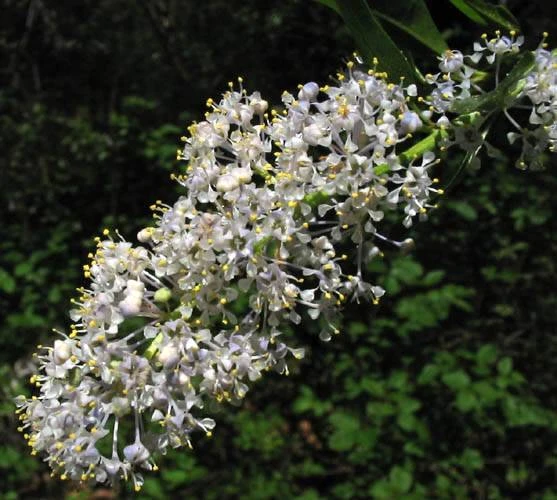Redheart
(Ceanothus spinosus)
Redheart (Ceanothus spinosus)
/
/

Anthony J. Valois
Public domain
Image By:
Anthony J. Valois
Recorded By:
Copyright:
Public domain
Copyright Notice:
Photo by: Anthony J. Valois | License Type: Public domain | License URL: https://creativecommons.org/public-domain/ | Uploader: Stickpen | Publisher: Wikimedia Commons | Title: Ceanothus_spinosus_01.jpg | Notes: {{Information |Description={{en|Kapok ''[[(Ceiba pentandra)]]''. Kolkata, West Bengal,India.}}. [[Category:Ceiba]] |Source=self-made |Date=2/6/07 |Author= [[User:J.M.Garg|J.M.Garg]] }} |





















































Estimated Native Range
Climate Requirements for Westfield, Massachusetts
| This Plant | Your Site | Plant Suitability for Your Location | ||
|---|---|---|---|---|
| • Precipitation | 10" - 31" | 45" | Aquatic | Aquatic |
| • High Temp. | 75°F - 99°F | 85°F | Your summer temperatures are normal for this plant. | Excellent |
| • Low Temp. | 29°F - 48°F | 14°F | Your winter temperatures may be too cold for this plant | Too cold |
This plant may not grow well at your location - your precipitation is too high.
Summary
Ceanothus spinosus, commonly known as Redheart, is an evergreen shrub native to the chaparral, coastal sage scrub, and grasslands of California and Baja California. It typically grows to a height of 6-12 feet and a width of 6-9 feet. The plant is characterized by its stiff and sharply pointed branches, which contribute to its common name and the Greek origin of its genus name, "Ceanothus," meaning "spiny plant." The species name "spinosus" further emphasizes its spiny nature. Redheart’s smooth, olive-green bark and rough-barked trunk near the base are distinctive features.
Redheart is valued for its drought tolerance and ability to thrive in full sun or part shade with low to medium water requirements. It prefers well-drained soils and is suitable for xeriscaping. The plant produces showy clusters of blue and white flowers in the spring, which are highly attractive to pollinators such as bees and butterflies. It is often used in native plant gardens, as a hedge or screen, and for slope stabilization. While generally low-maintenance, it can be susceptible to root rot if overwatered or planted in poorly drained soils.CC BY-SA 4.0
Redheart is valued for its drought tolerance and ability to thrive in full sun or part shade with low to medium water requirements. It prefers well-drained soils and is suitable for xeriscaping. The plant produces showy clusters of blue and white flowers in the spring, which are highly attractive to pollinators such as bees and butterflies. It is often used in native plant gardens, as a hedge or screen, and for slope stabilization. While generally low-maintenance, it can be susceptible to root rot if overwatered or planted in poorly drained soils.CC BY-SA 4.0
Plant Description
- Plant Type: Shrub
- Height: 6-12 feet
- Width: 6-9 feet
- Growth Rate: Moderate
- Flower Color: Blue, White
- Flowering Season: Spring, Winter
- Leaf Retention: Evergreen
Growth Requirements
- Sun: Full Sun, Part Shade
- Water: Low, Medium
- Drainage: Fast
Common Uses
Bee Garden, Bird Garden, Butterfly Garden, Drought Tolerant, Fragrant, Hedges, Hummingbird Garden, Low Maintenance, Showy Flowers
Natural Habitat
native to the chaparral, coastal sage scrub, and grasslands of California and Baja California
Other Names
Common Names: Greenbark Ceanothus, Greenbark
Scientific Names: Ceanothus spinosus
GBIF Accepted Name: Ceanothus spinosus Nutt.